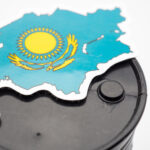(Bloomberg) – OPEC+ is facing a dilemma when it comes to reconciling the group’s goals with what the market needs, and the oil group is sending a “confused message,” according to one of the world’s top crude traders.
The group led by Saudi Arabia and Russia delayed easing supply curbs last week, but now needs to pick which way it wants to go ahead of next year, given outlook for balances was “not great”, Ben Luckock, global head of oil at Trafigura, told traders and executives gathered at APPEC 2024, a conference hosted by S&P Global Commodity Insights.
OPEC and its allies have been withholding supplies in a bid to prop up prices, but that’s seen the group losing market share to rivals including U.S. shale producers, even as its own members’ spare capacity goes unused.
Meanwhile, despite the now-extended curbs, oil prices have remained under pressure on concerns about slowing global consumption, with Brent threatening to slump back below $70 a barrel.
Luckock said the oil market wanted to know that if prices went back up, OPEC was not going to bring those barrels back — or would bring them back much more slowly. The group needed to give the market confidence as the volumes weren’t needed at present, he added.
The International Energy Agency said in August that global balances would flip to a surplus in the fourth quarter should OPEC stick to its plan to return production. The Paris-based body is set to update that outlook later this week.
Goldman Sachs Group Inc., analyst Daan Struyven told the conference that while a potential price war between OPEC+ and U.S. shale producers was unlikely, oil’s so-called floor price may be shifting from about $75-$80 toward $70. That’s the estimated, long-run shale-breakeven price.







